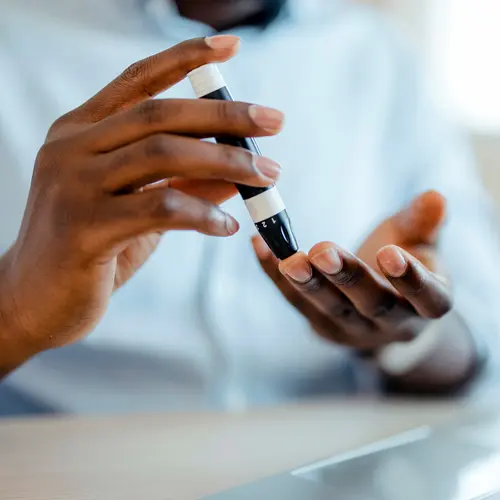Maybe you already manage your diabetes with insulin shots, medicine, and a healthy diet. Go ahead and give yourself a high-five for taking care of your condition, but don't drop your guard! You still could get low blood sugar levels if your diabetes is treated with insulin or certain types of diabetes medications.
It's called hypoglycemia, and it can happen when your body has too much insulin, or too little food or sugar, called glucose. If you don't treat it in time, it can lead to insulin shock, which can cause you to have a seizure or pass out.
Stay out of the danger zone with some simple tips:
Listen to your body. Everybody reacts differently to low blood sugar. You might feel shaky, sweaty, or get a pounding heart. You could notice that you're grumpy or upset. Learn your warning signs so you can deal with low blood sugar before it's a problem.
Test your glucose at the first sign of symptoms. Different kinds of meters can do this. If yours checks "whole blood," a glucose reading under 70 mg/dl is low. On a newer meter that monitors "plasma glucose," 80 mg/dl or lower means low blood sugar levels. Ask your doctor what your target numbers should be.
Always carry quick-sugar foods with you. To raise your blood sugar quickly back to a safe level, you'll need to eat 15 grams of simple carbohydrates. Foods with protein and fat won't do the trick fast enough.
Try:
- Three or four glucose tablets
- 1/2 cup (4 ounces) of juice
- 1/2 cup regular (not diet) soda
- A small piece of fruit, like an apple, orange, or half a banana
- 1 tablespoon of sugar, plain or dissolved in water
Rest 15 minutes. If you don't feel better after you eat and your blood sugar is still low, eat another 15 grams of a quick-sugar food, then retest your glucose. Repeat until your levels return to normal. If your next meal is an hour or more away, you'll need to have another snack to keep your blood sugar from dipping again.
Prepare for an emergency. If you don't raise your blood sugar in time, there's a chance you may go into insulin shock, which can be dangerous. Talk to your doctor about whether you need a prescription for a glucagon kit. Glucagon is a hormone you can inject that releases stored glucose into your bloodstream. It can raise your blood sugar if you can't eat or drink.
Ask others for help. Don't wait until you're having an emergency to tell others about your diabetes. Your family members, co-workers, and friends you see often need to be able to help you. Tell them your symptoms of low blood sugar and what types and amounts of food they can give you. If you have emergency glucagon, they should learn how to inject it into your arm, bottom, or thigh, or know to call 911 if you pass out.
ID yourself. Always wear a medical ID bracelet or necklace that has your health information in case you do pass out.
Talk to your doctor. For most people, hypoglycemia is mild and easy to treat. If you're having low blood sugar problems several times a week or they're severe, call your doctor. You might need to change your medicine, diet, or even when you work out, since exercise can affect your insulin levels.

